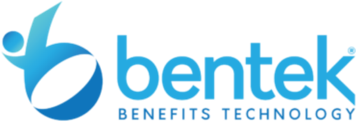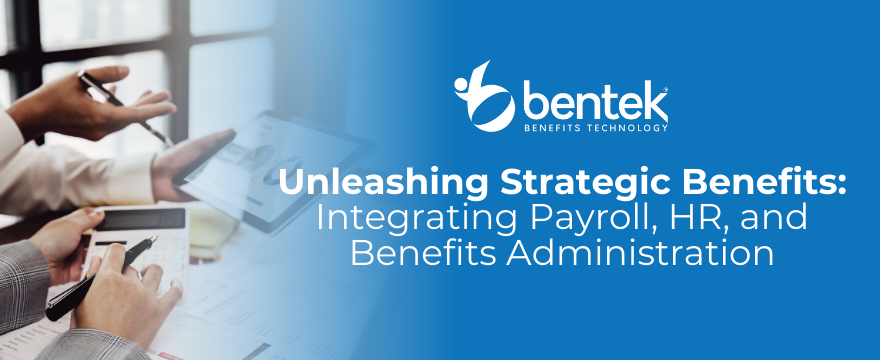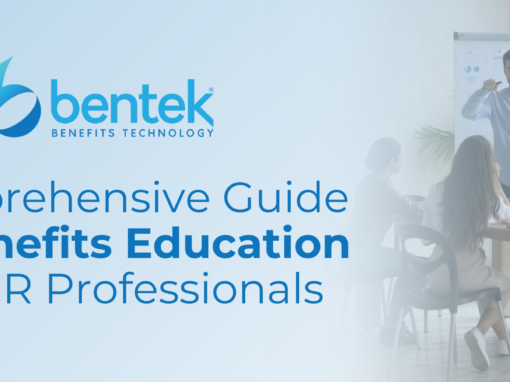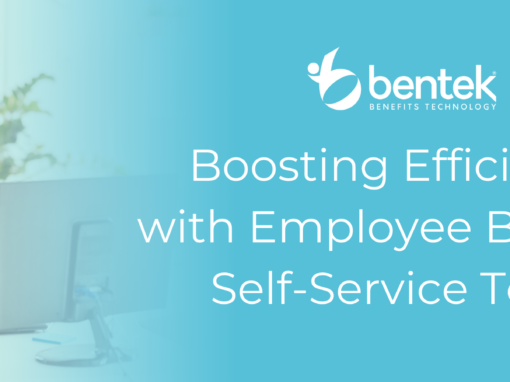Have you ever considered the intricate dance between payroll, HR, and benefits administration within your organization? It’s a complex tango that, when performed in sync, can elevate not just the operational efficiency but also the morale and satisfaction levels of your employees. Yet, the reality for many organizations is a step out of rhythm—a disjointed effort that can lead to a range of issues from compliance mishaps to employee dissatisfaction. In fact, a recent survey from Gartner revealed that 56% of HR leaders confirmed their HR technology solution does not match their current and future business needs.
In today’s dynamic workplace, aligning payroll and benefits with an organization’s goals is more than a process—it’s a strategy that empowers employees and drives efficiency. This approach paves the way for an engaged and informed workforce that is attuned to the organization’s vision and capable of contributing to its success.
In this article, we will explore how synergy between payroll, HR, and benefits administration can enhance an organization’s efficiency and employee satisfaction. Are you ready to discover how a unified HR framework can become your organization’s strongest asset?
Aligning Payroll and Benefits Administration with Organizational Goals
Understanding an organization’s vision, mission, and objectives is pivotal in crafting a comprehensive compensation and benefits strategy. This alignment not only fosters efficiency and satisfaction among employees but also propels the organization towards its broader goals. It’s a strategic endeavor that necessitates a thorough grasp of the organization’s aspirations and the tactical acumen to translate these into actionable HR policies.
- Crafting Clear Compensation Structures: It’s essential to develop compensation structures that mirror the organization’s values and aspirations. For instance, if innovation is a core value, organizations might offer bonuses for groundbreaking ideas or patents. This direct reflection of company values in compensation policies not only motivates employees but also reinforces the importance of these values within the organizational culture.
- Tailoring Benefits to a Diverse Workforce: The diversity of today’s workforce requires benefits packages that are equally diverse and inclusive. By tailoring benefits packages to meet the varying needs of employees, organizations can significantly enhance engagement and retention. For example, offering a range of health care plans, including those that cater to single employees, families, and domestic partnerships, sends a strong message of inclusivity and respect for employees’ varied life stages and needs.
- Promoting Efficiency and Satisfaction: Aligning payroll and benefits systems with organizational goals ensures that HR operations are not only efficient but also deeply embedded with the organization’s mission. This strategic alignment results in streamlined processes that save time and reduce errors, contributing to overall employee satisfaction.
By integrating these strategies, organizations can ensure that their payroll and benefits administration is not just a back-end operational function, but a strategic tool that supports and aligns with their overarching goals. This holistic approach not only enhances operational efficiency but also plays a crucial role in attracting, engaging, and retaining talent, thereby driving organizational success.
Fostering Collaboration Across HR Teams
In the complex web of payroll, HR, and benefits administration, fostering collaboration across HR teams is not just beneficial; it’s imperative for organizational success. The integration of these functions requires clear roles, effective teamwork, and active stakeholder involvement to ensure a cohesive operation that aligns with the organization’s goals.
Strategies for Enhancing Collaboration:
- Define Clear Roles and Responsibilities: Establishing clear roles within the HR team ensures that each member understands their tasks, reducing overlaps and gaps in the payroll and benefits process. This clarity supports efficient workflow and accountability.
- Implement Regular Cross-Functional Meetings: These meetings serve as a platform for discussing updates, challenges, and progress towards shared goals. They encourage open dialogue and the exchange of ideas, fostering a culture of transparency and collective problem-solving.
- Adopt Integrated HR Systems: An integrated HR system offers a unified view of employee data, ensuring that information updated in one area reflects across all relevant functions. This synchronization eliminates data silos, enhancing collaboration and decision-making accuracy.
- Establish Committees for Policy Review: Forming committees dedicated to reviewing and updating policies ensures that practices remain current and compliant with legal standards. These committees act as a bridge, uniting various functional areas around common objectives and fostering a collaborative environment.
- Promote a Culture of Transparency and Cooperation: Encouraging open communication and sharing of information between departments cultivates trust and aligns the team towards common goals. When teams operate in a transparent environment, they are more likely to cooperate effectively, leading to improved outcomes in payroll and benefits administration.
By addressing these areas, HR departments can significantly improve interdepartmental communication and collaboration, ultimately enhancing organizational efficiency and employee satisfaction. This holistic approach not only streamlines operations but also aligns HR practices with the broader organizational strategy, ensuring a competitive edge in the dynamic business landscape.
Educating and Engaging Employees in Payroll and Benefits Administration
Effective communication and involvement in payroll and benefits administration are instrumental in building a positive workplace culture and enhancing employee satisfaction. By fostering an environment where employees are well-informed about their compensation and benefits, organizations can significantly improve engagement and retention rates.
Strategies for Effective Education and Engagement:
- Conduct Regular Information Sessions: Organize frequent sessions to update employees on any changes in their compensation, benefits packages, or payroll processes. These sessions can be in the form of workshops, webinars, or informal meetings, ensuring accessibility for all employees.
- Develop Accessible Online Resources: Create a dedicated internal portal where employees can easily access information about their payroll and benefits. This could include FAQs, detailed guides on understanding pay slips, tax implications, and how to make the most of their benefits.
- Open Transparent Communication Channels: Establish clear and open channels for employees to ask questions or express concerns regarding their pay or benefits. This openness fosters trust and shows that the organization values its employees’ wellbeing and satisfaction.
- Involve Employees in Benefits Discussions: Invite employees to participate in discussions about potential changes or enhancements to benefits packages. This not only makes them feel valued but also ensures that the benefits offered align with their needs and preferences.
By implementing these strategies, organizations can ensure that their workforce remains informed, engaged, and satisfied with their compensation and benefits. This approach not only empowers employees but also encourages a culture of transparency and cooperation, contributing significantly to the overall organizational success.
In conclusion, the integration of payroll and benefits into the fabric of an organization’s goals is not just about enhancing administrative efficiency—it’s about empowering employees with the tools and understanding they need to thrive. When payroll and benefits are effectively aligned with organizational aspirations, and when collaboration and communication are prioritized, employees are more likely to feel valued and invested in their work. This integration leads to a workforce that is not only more efficient but also more engaged and satisfied. As companies continue to navigate the complexities of the modern workplace, the ones that succeed will be those that understand the profound impact of integrating payroll and benefits administration with a strategic, employee-centric approach.
For more articles like this one, check out the Bentek Blog!




